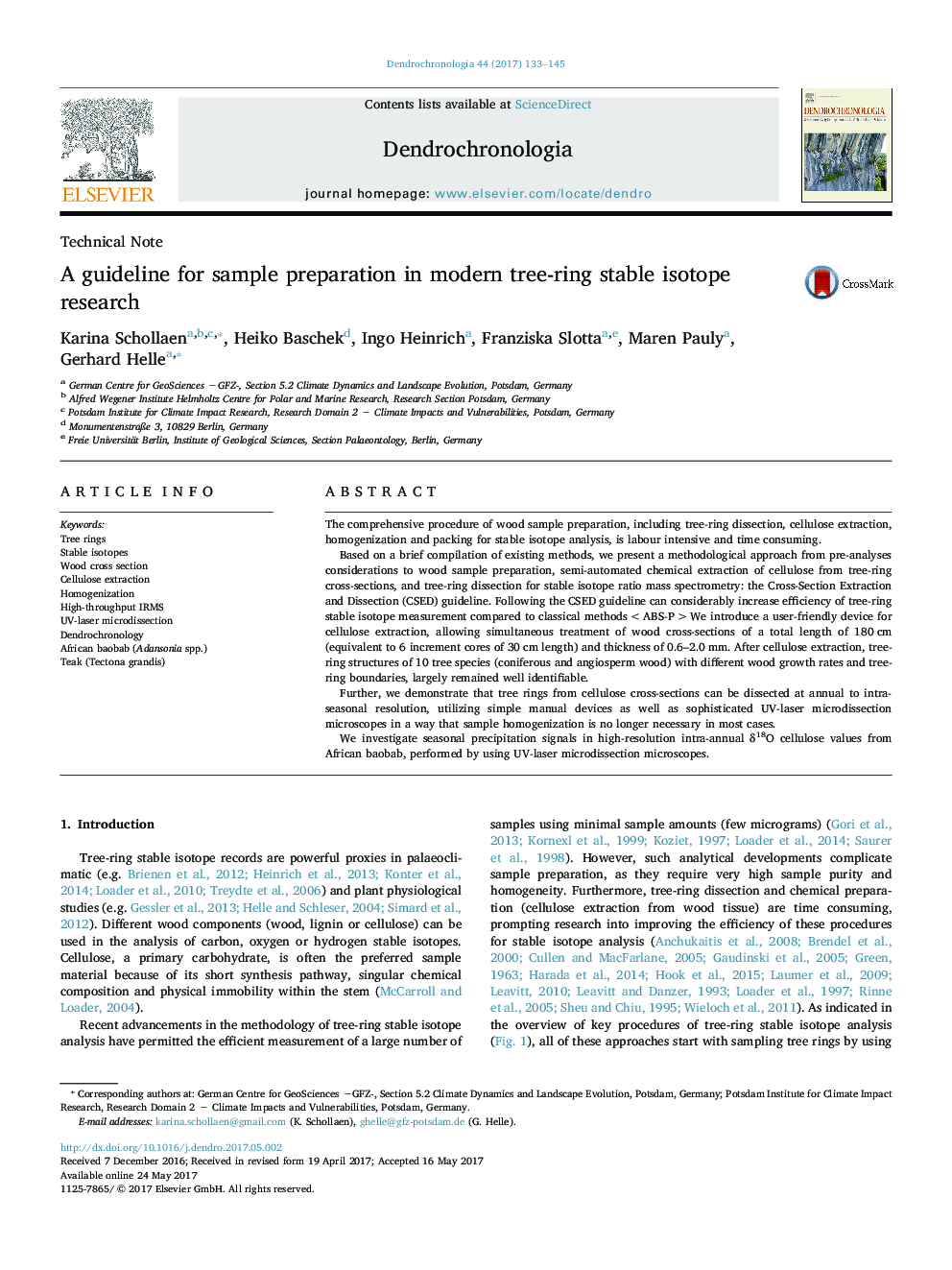| Article ID | Journal | Published Year | Pages | File Type |
|---|---|---|---|---|
| 6458950 | Dendrochronologia | 2017 | 13 Pages |
The comprehensive procedure of wood sample preparation, including tree-ring dissection, cellulose extraction, homogenization and packing for stable isotope analysis, is labour intensive and time consuming.Based on a brief compilation of existing methods, we present a methodological approach from pre-analyses considerations to wood sample preparation, semi-automated chemical extraction of cellulose from tree-ring cross-sections, and tree-ring dissection for stable isotope ratio mass spectrometry: the Cross-Section Extraction and Dissection (CSED) guideline. Following the CSED guideline can considerably increase efficiency of tree-ring stable isotope measurement compared to classical methods
